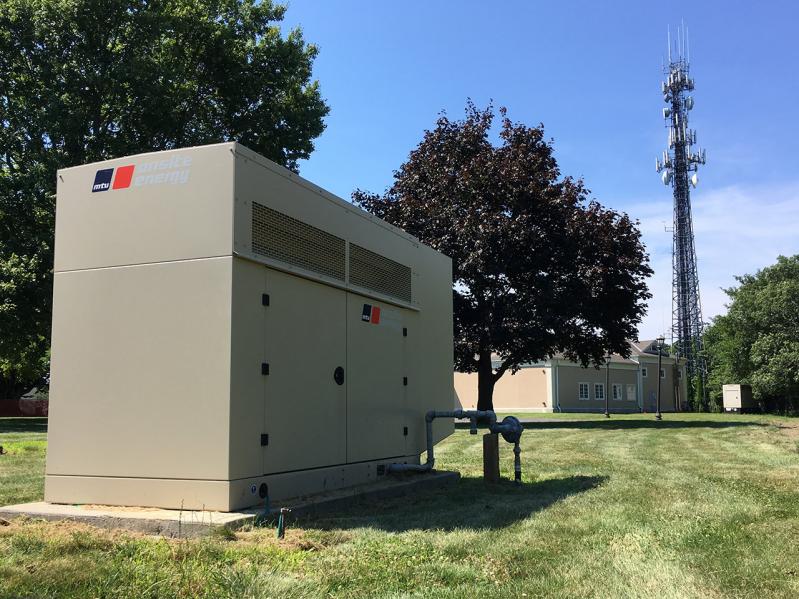The East Hampton Town Board voted on Tuesday to participate in the South Fork Peak Savers load relief program. The move commits the town to operate its standby emergency generators on 24-hour notice by and at the direction of Applied Energy Group, an energy industry consultancy that is under contract with PSEG Long Island, during anticipated peak-demand periods.
Doing so, the board decided, will reduce operation of the Long Island Power Authority’s so-called peaker plants, fossil fuel-fired installations that operate as needed to meet peak demand. By switching from the utility’s electrical grid to onsite generators during designated “demand response events” between May 1 and Sept. 30 — there were four last year and two in 2017 — demand is temporarily relieved and the need to operate the fossil-fuel plants is reduced.
In March, Joe Rocco of A.E.G. described to the board a program akin to PSEG’s Commercial System Relief Program, which reduces energy use at critical times such as hot summer days and has been available to larger commercial customers since 2016. (PSEG Long Island manages the electrical grid on behalf of LIPA.)
Only propane generators will be used, Lauren Steinberg of the town’s Natural Resources Department told the board, alleviating a concern voiced in the spring by members of the Wainscott Citizens Advisory Committee that a diesel generator at police department headquarters in that hamlet would be used, to the detriment of air quality there.
No diesel-generation assets will be included in the program, but future renewable energy generation and storage infrastructure can be added, according to the resolution.
Five generators at town-owned buildings may operate to meet peak demand. Ms. Steinberg identified the sites as the Parks Department, the police garage, the Highway Department, the senior citizens center, and the food pantry on Pantigo Place. Employee shifts at these facilities end earlier in the day than elsewhere, she said, so there is less possibility of disruption during a demand-response event. The generators at the Highway Department headquarters and food pantry are new, she said, the implication being that they are the most energy-efficient.
A.E.G. will provide incentives for the town’s participation. These include a one-time enrollment payment of $50 per kilowatt for each kilowatt of contracted load relief and an annual performance payment of $110 per kilowatt of verified load relief provided during each May 1-Sept. 30 span, as well as an annual fuel stipend of 25 cents per kilowatt hour of load relief.
“Peak demand is going to continue to rise without any management efforts,” Ms. Steinberg told the board, and more plants would be needed without a program to reduce that demand. The town’s participation provides an “opportunity to lead by example and reduce our demand for electricity,” she said.
The town’s energy sustainability and resiliency committee supports the program, and its chairwoman, Linda James, thanked the board before its discussion Tuesday for expressing confidence in the committee. Approval of the load relief program, she said, would in turn give the committee confidence in the board as the committee launches a public awareness campaign about the board’s recently adopted measures aimed at moving the town closer to its goal of deriving 100 percent of its energy needs from renewable sources.
The vote was 4 to 1 in favor of adopting the program. As he did during the board’s deliberations over it in April, Councilman Jeff Bragman expressed reservations. The program effectively turns the town’s emergency generators into miniature peaker plants, a move counter to the town’s goal of achieving all of its energy needs through renewable, emission-free sources, he said. “It strikes me as a robbing-Peter-to-pay-Paul-type plan. I don’t see it really promoting our goals of getting eventually to 100 percent renewable, because we’re just trading one carbon-based power generator for another.”
It was not clear if there had been an analysis of how much carbon dioxide the propane generators would emit during demand-response events, Mr. Bragman said, nor had he heard of any comparison between the propane generators and “the smaller generators PSEG brings into the community at Wainscott and Montauk” to meet peak demand. If the goal is to retire peaker plants, “I don’t see how this gets us there,” he said, adding that the benefit is “overstated” and that the Town of Southampton declined to participate in the program. “I don’t see this as a benefit to the town or our efforts to go renewable,” he said.
But his colleagues backed the town’s participation. “We know we’re trading one thing for another,” said Councilwoman Sylvia Overby, but “if we can shave the peak, we can stop [LIPA] from building another fossil fuel plant, which is what they would have to do in this environment now.” The program is a stopgap measure between the present and measures including establishment of a community choice aggregation program and operation of the proposed South Fork Wind Farm, the latter of which could happen late in 2022.
The more immediate result of the load relief program, Ms. Overby said, would be to preclude the need for another fossil-fuel plant, which, she noted, would be constructed at ratepayers’ expense. Money realized from A.E.G.’s incentives, she said, could help pay for battery energy storage and solar arrays on town property.
The propane generators will operate at 30 percent greater efficiency than LIPA peaker plants, Supervisor Peter Van Scoyoc said, calling that “a significant number” and resulting in a net reduction in carbon dioxide emissions. “It’s not a solution long term,” he said, “but it certainly helps us bridge the gap until we can put in more renewables.”

